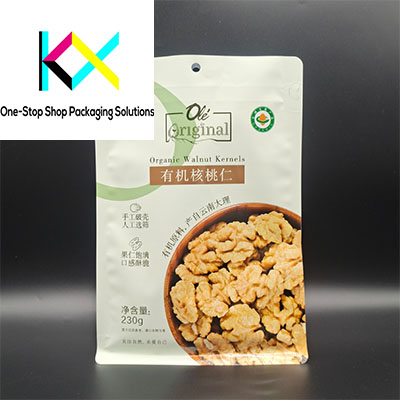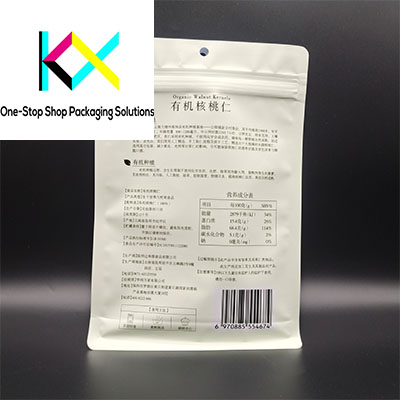Flat Bottom Box Pouches: The Unsung Heroes of Modern Flexible Packaging
In an era where packaging must marry form, function, and sustainability, flat bottom box pouches have emerged as a versatile solution reshaping industries from specialty coffee to pet treats. These hybrid designs blend the structural stability of rigid boxes with the lightweight efficiency of pouches, offering brands a canvas for innovation while addressing modern challenges like eco-consciousness and e-commerce durability. As consumer preferences pivot toward convenience and green practices, the ripple effects of flat bottom box pouches are evident—from printed coffee pouches boasting artisan aesthetics to dog treat packaging bags built to withstand chew-happy pups.

The Structural Edge: Why Flat Bottom Designs Dominate
The rise of flat bottom box pouches is no accident. Their broad, stable base allows upright retail displays, maximizing shelf presence without the bulk of traditional boxes—a trait borrowed from potato chip bag packaging, where standing pouches dominate snack aisles. For coffee roasters, this design translates to premium appeal. Brands like Stumptown and Intelligentsia use printed coffee pouches with matte finishes and embossed logos, leveraging the flat bottom’s “billboard effect” to showcase branding. Meanwhile, the gusseted sides accommodate bulky contents, from whole-bean coffee to granola, without compromising structural integrity.
But the true genius lies in their adaptability. The same flat bottom box pouches that elegantly hold single-origin coffee are being reengineered for dry fruit packaging pouch applications. By integrating resealable zippers—a feature honed in snack packaging—brands like Terrasoul Superfoods ensure nuts and dried fruits stay fresh longer, even in humid climates.

Sustainability Meets Smart Design
Sustainability is no longer a buzzword but a baseline expectation. Here, flat bottom box pouches shine. Many now use mono-materials like recyclable polyethylene (PE) or compostable PLA laminates, reducing reliance on multi-layer plastics. This shift mirrors advancements in potato chip bag packaging, where companies like PepsiCo test all-PE films to simplify recycling.
Coffee brands are taking cues further. Ethical Bean Coffee employs printed coffee pouches made from 70% post-consumer recycled content, adorned with soy-based inks. Similarly, dog treat packaging bags from brands like Riley’s Organics use flat bottom designs with paper exteriors and compostable liners—materials initially popularized in dry fruit packaging pouch innovations. The cross-industry adoption of these materials underscores a shared goal: minimizing waste without sacrificing durability.

The Snack Sector’s Influence on Freshness Tech
Snacks have long led the charge in freshness preservation, and their tech is migrating to other sectors. Nitrogen flushing, a staple in potato chip bag packaging to prevent staleness, is now standard in flat bottom box pouches for coffee and nuts. Oxygen-absorbing liners, once reserved for premium jerky, are finding their way into dry fruit packaging pouch designs to extend shelf life by months.
Even pet food isn’t left behind. Dog treat packaging bags now feature ASTM-certified compostable films with barrier properties rivaling traditional plastics—a breakthrough first seen in plant-based snack wrappers. The flat bottom structure ensures these bags stand upright in pantries, while tear-notches and resealable closures cater to convenience-driven pet owners.

Print Technology: Where Art Meets Function
Customization is king in today’s market. Printed coffee pouches exemplify this, with brands using high-definition flexography and digital printing to tell origin stories through vibrant visuals. The flat bottom’s broad panels serve as a perfect canvas, much like potato chip bag packaging leverages bold graphics to captivate shoppers.
Emerging trends include tactile finishes—soft-touch coatings or embossed textures—borrowed from luxury dry fruit packaging pouch designs. Meanwhile, smart labels with QR codes (pioneered in snacks for traceability) are appearing on dog treat packaging bags, linking to feeding guides or sustainability reports.

Challenges: Balancing Cost and Infrastructure
Despite their benefits, flat bottom box pouches face hurdles. Compostable variants require industrial facilities, which remain scarce globally. Brands like Alter Eco, known for compostable printed coffee pouches, partner with NGOs to educate consumers and expand composting access—a model pet treat brands are now emulating.
Cost is another barrier. Sustainable materials can inflate packaging expenses by 20-30%, a tough sell for small-batch roasters or indie pet brands. However, economies of scale are emerging as retailers like Whole Foods mandate eco-friendly packaging, driving demand and lowering costs.
The Future: Edible Films and Beyond
Looking ahead, the next frontier could dissolve the line between packaging and product. Edible films, tested in dry fruit packaging pouch prototypes, might line flat bottom box pouches, dissolving during brewing or cooking. Active packaging, infused with natural antioxidants (a tech borrowed from potato chip bag packaging labs), could further extend freshness for coffee and treats.
Conclusion: A Packaging Paradigm Shift
The flat bottom box pouch is more than a trend—it’s a testament to packaging’s evolving role as a sustainability ambassador and brand differentiator. From printed coffee pouches that whisper artisanal care to dog treat packaging bags built for eco-conscious pet parents, this design proves that flexibility and structure can coexist. As industries cross-pollinate ideas—snack freshness tech, coffee’s aesthetic demands, pet care’s durability needs—the humble pouch becomes a hero, quietly shaping a greener, more efficient future.
In the end, the lesson is clear: innovation thrives when industries look beyond their aisles. After all, if a potato chip bag can inspire a coffee revolution, imagine what’s possible when we pack with purpose.
You can visit our website to know more about our compostable pouch:
